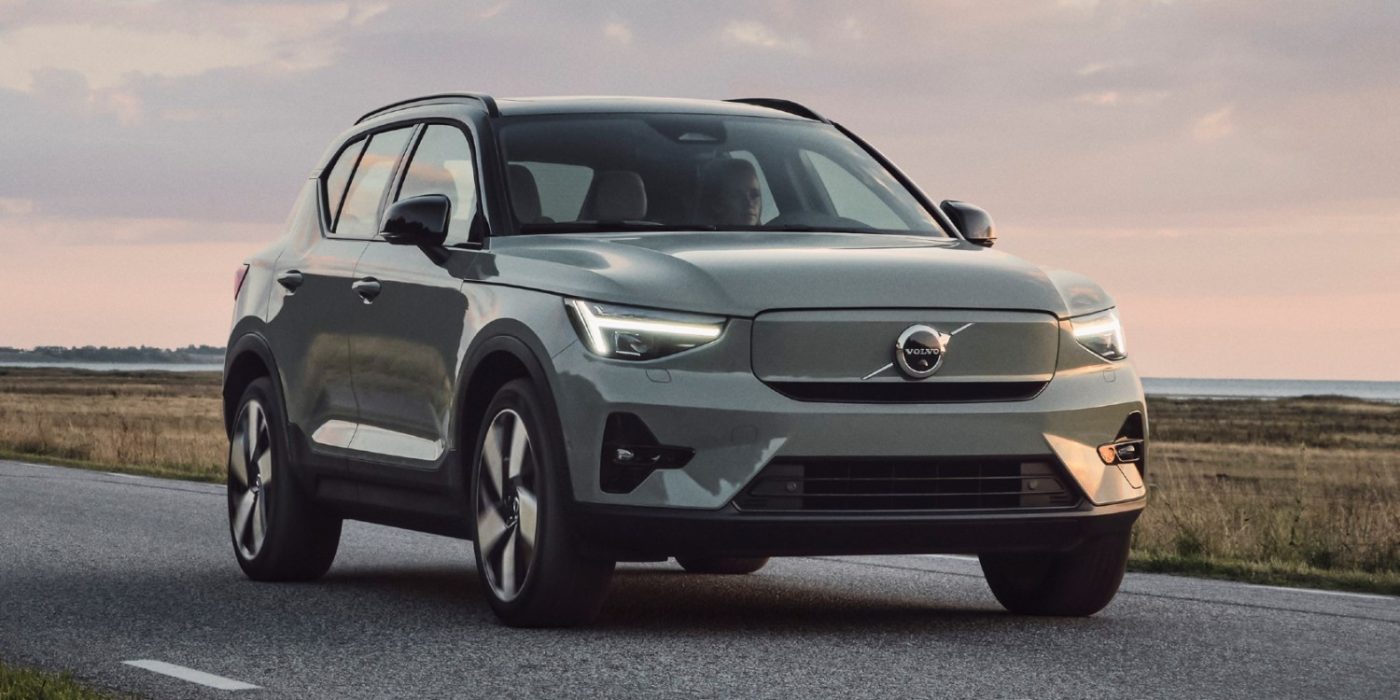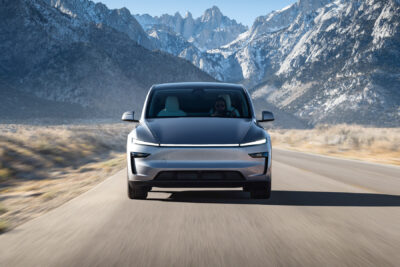Volvo is updating the drive systems of the XC40 and C40
Volvo has extensively revised the drive systems of its electric models XC40 and C40. In the all-wheel drive models, an asynchronous motor replaces the previously used permanent synchronous motor on the front axle. The new motor layout of the all-wheel-drive models also has consequences for the single-motor models.
++ This article has been updated. Kindly continue reading below. ++
Until now, the single-motor variants have simply used a PSM on the front axle. In the revised model, the drive will move from the front to the rear axle – apparently for “production-related reasons”.
Since the PSMs on the front axle do not have a mechanical clutch (as is the case with Hyundai-Kia’s E-GMP models, for example), they cannot be disconnected and always run with the car. This has negative effects, especially on the all-wheel-drive model: If propulsion is only via the rear drive unit when power demand is low, the front PSM would recuperate. Therefore, the front drive unit is energised just enough to provide neither propulsion nor deceleration torque. However, this costs some power. An ASM on the front axle, on the other hand, does not produce such efficiency losses if it is not energised.
However, the higher range of the models is not only due to lower consumption: the large battery in the all-wheel-drive models and the Single Motor Extended Range variant increases by 3 kWh to 78 kWh. In the C40 with all-wheel drive, the range increases in total from 449 to 507 kilometres according to WLTP, in the new drive variant with the rear engine it is up to 533 kilometres. In the somewhat less aerodynamic XC40, up to 515 kilometres are possible with this drive. Another important change: the maximum charging power increases from 150 kW to 200 kW, while the charging time decreases by only one minute to 27 minutes from ten to 80 per cent.
The ‘Standard Range’ model, which is only available with a rear-mounted engine, still has an energy content of 67 kWh, which results in 438 kilometres. The single-engine models also get a little more power: with the small battery, it is 175 kW, with the large battery it is 185 kW.
For the all-wheel drive model, the system power remains at 300 kW, but it is divided differently with the new drive layout: instead of 2x 150 kW, it is now 180 kW from the PSM on the rear axle and 120 kW that can be added as needed via the ASM on the front axle.
The changes will apply to vehicles ordered from 1 December, with production scheduled to start in May 2023 for twin-engine vehicles and autumn 2023 for single-engine models.
So far, however, there has been no announcement from Volvo Germany about the changes, but they are apparent from the new price lists that have been published for both models. Thus, the XC40 Single Motor Standard Range will cost at least 47,500 euros (in ‘Essential’ trim). The XC40 Single Motor Extended Range costs 5,500 euros more, but includes the larger battery and the higher “Core” equipment. The XC40 Twin Motor starts at 59,950 euros, but comes in the even higher equipment line ‘Plus’.)
It is not known whether such changes will also be made to the Polestar 2. The Polestar electric limousine is based on the same platform (CMA) and has had hardly any deviating technical data so far. However, the Polestar is built in a different factory.
Update 03 May 2023
Volvo Car USA has updated the battery-electric C40 Recharge and XC40 Recharge models for the 2024 model year to improve the models range. This was done via two newly developed powertrains, which are available on both models.
In terms of technical specs, the new ‘Single Motor Extended Range’ C40 Recharge and XC40 Recharge models feature a 185 kW (248 hp) permanent magnet electric drive on the rear axle and an 82kWh battery pack. According to Volvo, this combination of a more energy-dense battery and efficient motor allows the C40 Recharge and XC40 Recharge to achieve up to 297 and 293 miles of range, respectively on the combined EPA test cycle.
Volvo further specifies that it is the first time in 25 years that a rear-wheel drive variant is on offer in the USA. “These updates are another big step in our work towards becoming a fully electric car maker by 2030,” said Javier Varela, chief operating officer and deputy chief executive at Volvo Cars. “Range and charging times are new key factors for more and more of our customers, and these improvements make our fully electric models even more attractive than they already were.”
autocar.co.uk, autoexpress.co.uk, fleetnews.co.uk, volvocars.com (update)





1 Comment